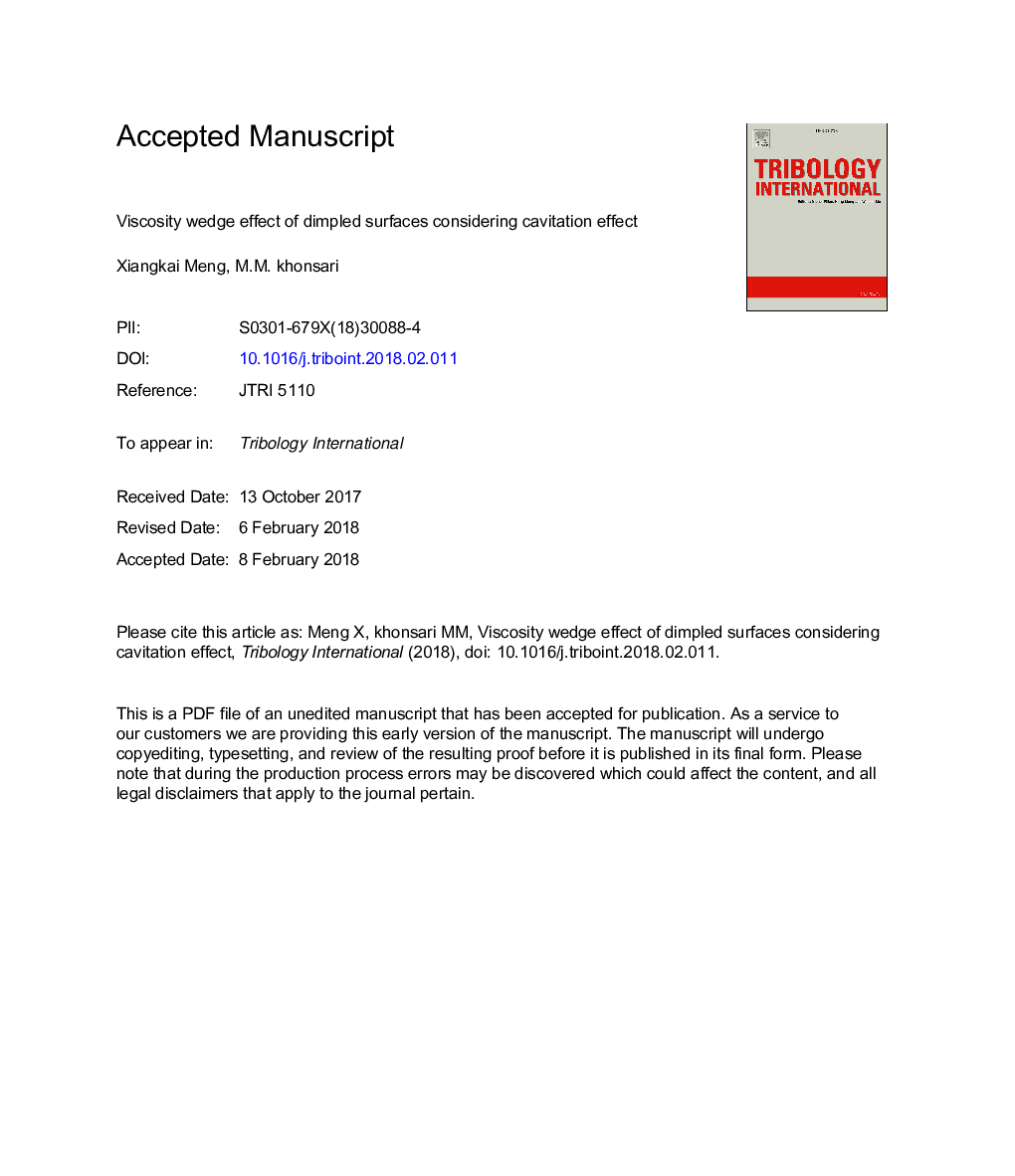| Article ID | Journal | Published Year | Pages | File Type |
|---|---|---|---|---|
| 7001775 | Tribology International | 2018 | 22 Pages |
Abstract
A thermohydrodynamic model is developed to study the viscosity wedge effect associated with dimpled surfaces considering the cavitation effects. The Streamline-Upwind/Petrov-Galerkin (SUPG) finite element method was applied to solve the energy and Reynolds equations combined with the Jakobsson-Floberg-Olsson (JFO) cavitation boundary conditions. The performance of a slider surface with an array of dimples are studied and the geometrical parameters of the dimples are optimized for enhancing the load-carrying capacity (LCC) and coefficient of friction (COF). The film pressure and temperature distribution at different conditions are analyzed. The simulation results show that the viscosity wedge effect has a more pronounced influence on the LCC and COF than the cavitation effect. The dimples with dimensionless depth hg/h0â¯=â¯0.6 and no more than 25% dimple area ratio are recommended.
Related Topics
Physical Sciences and Engineering
Chemical Engineering
Colloid and Surface Chemistry
Authors
Xiangkai Meng, M.M. khonsari,
